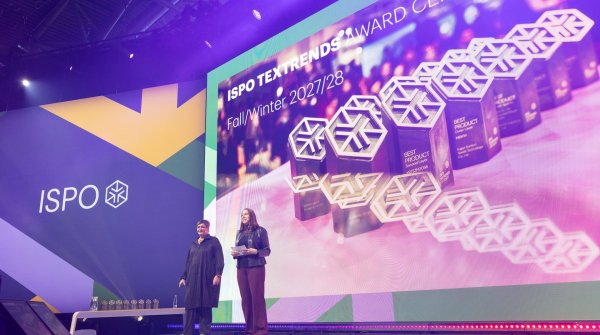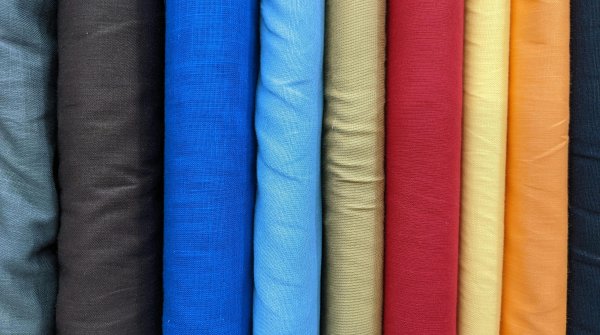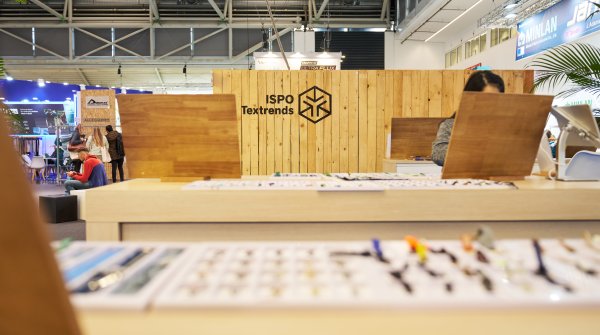Since 2024, public financial statements that go beyond mere finances have been mandatory for certain companies. Brands must account for their sustainable developments and social commitments. This is precisely why it is so important to invest in these areas.
The textile industry is an absolute pioneer when it comes to sustainability and has understood how to think holistically. These 5 innovative sourcing strategies could be the future of sustainable sourcing:
Regenerative sourcing is closely related to regenerative agriculture and is entirely aimed at preserving nature. To be legally compliant, new sourcing methods must be based on proven facts and accompanied by third-party organizations such as the Rodarte Institute in the USA. This oversees compliance with the Regenerative Biological Materials™ or ROC (Regenerative Organic Certified) standards from the Rodarte Organic Alliance. It's not just about sustainability, but much more about protecting soil, water, people and animals.
This approach mainly benefits certified natural materials, mainly cotton (GOTS or OSC certified) grown using regenerative agricultural methods. These materials must also be sustainably sourced to ensure long-term ecological benefits. However, it is not as simple as it sounds. Regenerative sourcing is a very complex approach that depends on many factors and is therefore difficult to implement. Certification follows a variety of strict criteria that take a lot of time to implement, but are absolutely necessary as a foundation for regenerative agriculture. For example, certification requires a guarantee over four years that soils will be renewed, and crops that ensure regeneration and transparency throughout the production chain.
That's why there are only a few standards that take these criteria into account and little experience in implementing them. The brand Patagonia, which co-developed the ROC standard, is a pioneer here and is completely committed to the regenerative approach. Their focus on innovative sourcing reflects a deep understanding that truly sustainable change begins at the root – in the soil and through responsible partnershipls. So Patagonia representatives will travel around the world to invest in regenerative agriculture.
In participatory sourcing or collective sourcing, suppliers contribute to the development of a brand through innovations - and in return, the brand drives sustainable developments in the suppliers' materials.
One example of this is Circle Sportswear's collaboration with Lenzing™ and Woolmark™. In developing the Supernatural Running Sportswear shoe, designed for the circular economy, the brand brought the two material manufacturers on board during the innovative research and development phase to develop a material with the lowest possible impact on the environment. The result: an innovative technical injection molding machine that was already brought back to Europe.
The collaborative approach optimizes inventory levels and helps respond to supply chain difficulties at short notice.
The approach is still in its infancy and should be treated with caution in practice. For now, we have little insight into the methods and cannot yet assess the effects precisely enough on a large scale. CO2 capture, CO2 offsets, sequestration, carbon credits – all of these sound sensible, but they often conceal greenwashing, whether consciously or unconsciously. What parameters and what measuring instruments are needed? In some countries, CO2 balances will soon be mandatory. In France, the law on climate and resilience prohibits the use of phrases such as "biodegradable, carbon neutral, emission neutral, made from recycled materials," etc., to combat greenwashing.
For this reason, it takes a long time for bio-industrial projects like Fairbric™ or Mango Material™ to be realized. Without traceability, nothing works - it is an indispensable tool in selecting sustainably sourced materials and innovatives sourcing strategies designed to reduce environmental damage and overproduction.
Allbirds™ has announced the first CO2-negative athletic shoe. To do this, the brand carefully calculated its carbon footprint using a life cycle analysis and carbon footprint - starting with renewable wool and ending with the finished shoe. The analyses were then verified by ISO 14067. Finally, a third party that verifies carbon certificates, and is itself B-Corp certified, undertook the verification. By publishing all the data, the brand shows how transparency works - and that progress comes before perfection.
New digital and science-based innovations are popping up everywhere right now, in the spirit of Speculative Design. And the fashion and apparel industry is putting its money where its mouth is: according to a FUTURE VVORLD publication, it has invested nearly $3 billion in biomaterials since 2013.
"You can only control what you can measure," says Tim Brown, founder of Allbirds. The manufacturer has developed a shoe with a better carbon footprint by measuring its carbon footprint and funding scientific research on biosources. And Allbirds wants to further reduce its impact: through innovative sourcing of sustainably sourced regenerative wool, a midsole made from sugar cane-based foam and eyelets made from bioplastics. These are made from microorganisms that convert methane into biomass. The M0.0NSHOT was presented in 2023 and launched on the market a year later.
And there are also exciting developments in the field of traceability. Science and digitization are coming together to make it possible to trace the origin of a fiber back to the DNA of its environment. The soil of a cotton field, the water used to irrigate it, or what a sheep eats to provide the wool all contain a combination of unique factors that can be used to infer the fiber's origin. These technologies play a central role in sustainable and innovative sourcing – because only those who know where materials come from can ensure true sustainability in the supply chain. The findings are then linked to a digital traceability tool and blockchain to secure the data and ensure it cannot be altered.
Sports and outdoor brands that are at the forefront of eco-social responsibility can succeed in closing the Sustainability Gap, and they can do it now. How? By looking to the future.
My motto in sourcing is: There is no such thing as the perfectly sustainably sourced material. The best way to achieve sustainability is to behave responsibly, economically, and conserve resources. And to be open to innovative sourcing strategies.
In the meantime, ecological responsibility also includes taking Virtual Water (or the Water Footprint) into account, since pollution is global and affects the entire chain from material extraction to the end of the life cycle. And this is where futurology can already help in the present.
The goal is to create more opportunities for action and to gain insights now for new strategies and investments - both for suppliers and brands.
Some of these approaches are still dreams of the future, because they have been tested little in practice and the long-term effects cannot be verified. To implement such innovative sourcing strategies successfully, collaboration with an independent third party (especially scientists and lawyers) is needed. Organizations like the European Flax and Hemp Alliance or Textile Exchange provide verified and certified information to support this development.
- ISPO awards
- Mountain sports
- Bike
- Design
- Retail
- Fitness
- Health
- ISPO Job Market
- ISPO Munich
- ISPO Shanghai
- Running
- Brands
- Sustainability
- Olympia
- OutDoor
- Promotion
- Sports Business
- ISPO Textrends
- Triathlon
- Water sports
- Winter sports
- eSports
- SportsTech
- OutDoor by ISPO
- Heroes
- Transformation
- Sport Fashion
- Urban Culture
- Challenges of a CEO
- Trade fairs
- Sports
- Find the Balance
- Product reviews
- Newsletter Exclusive Area
- Magazine







